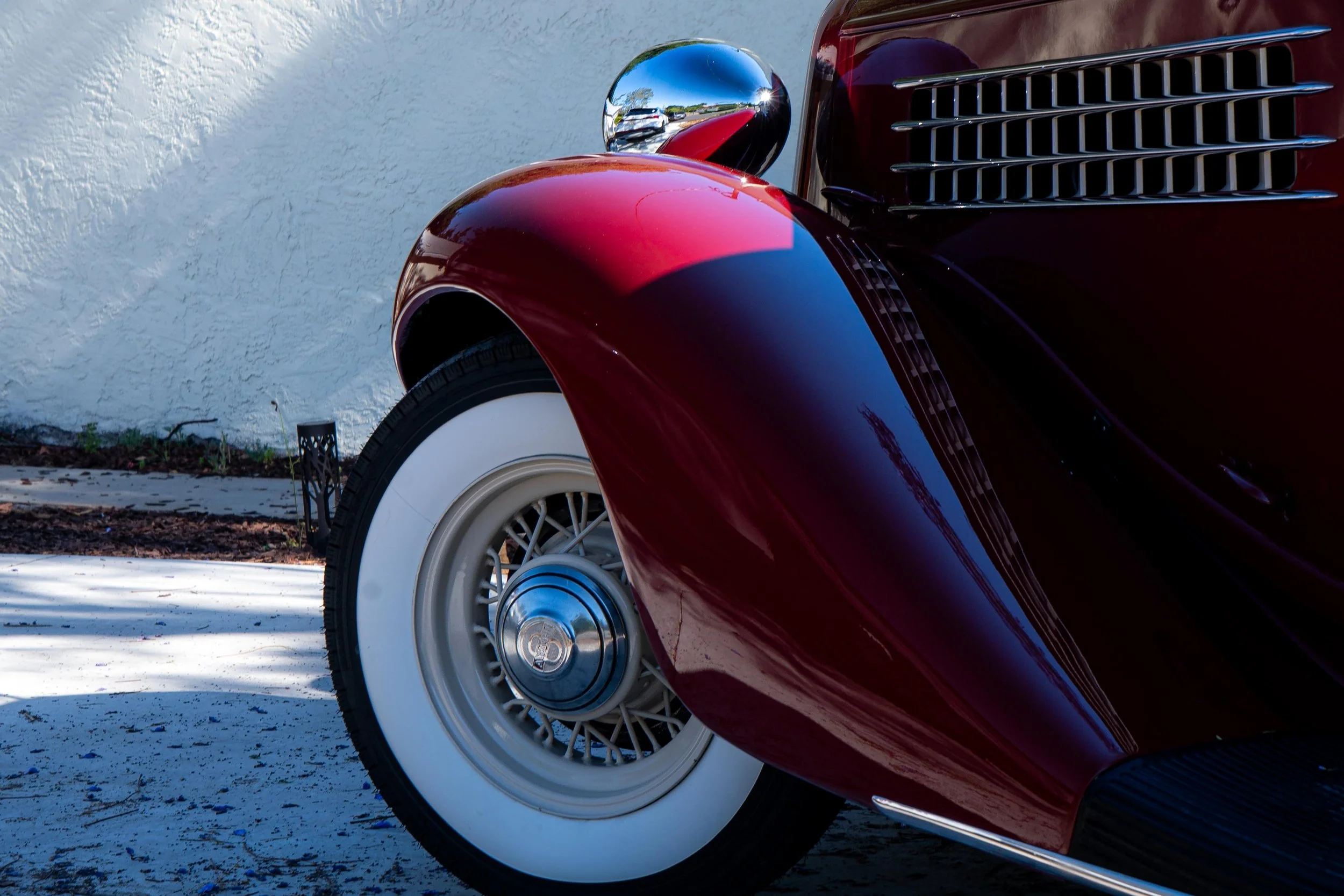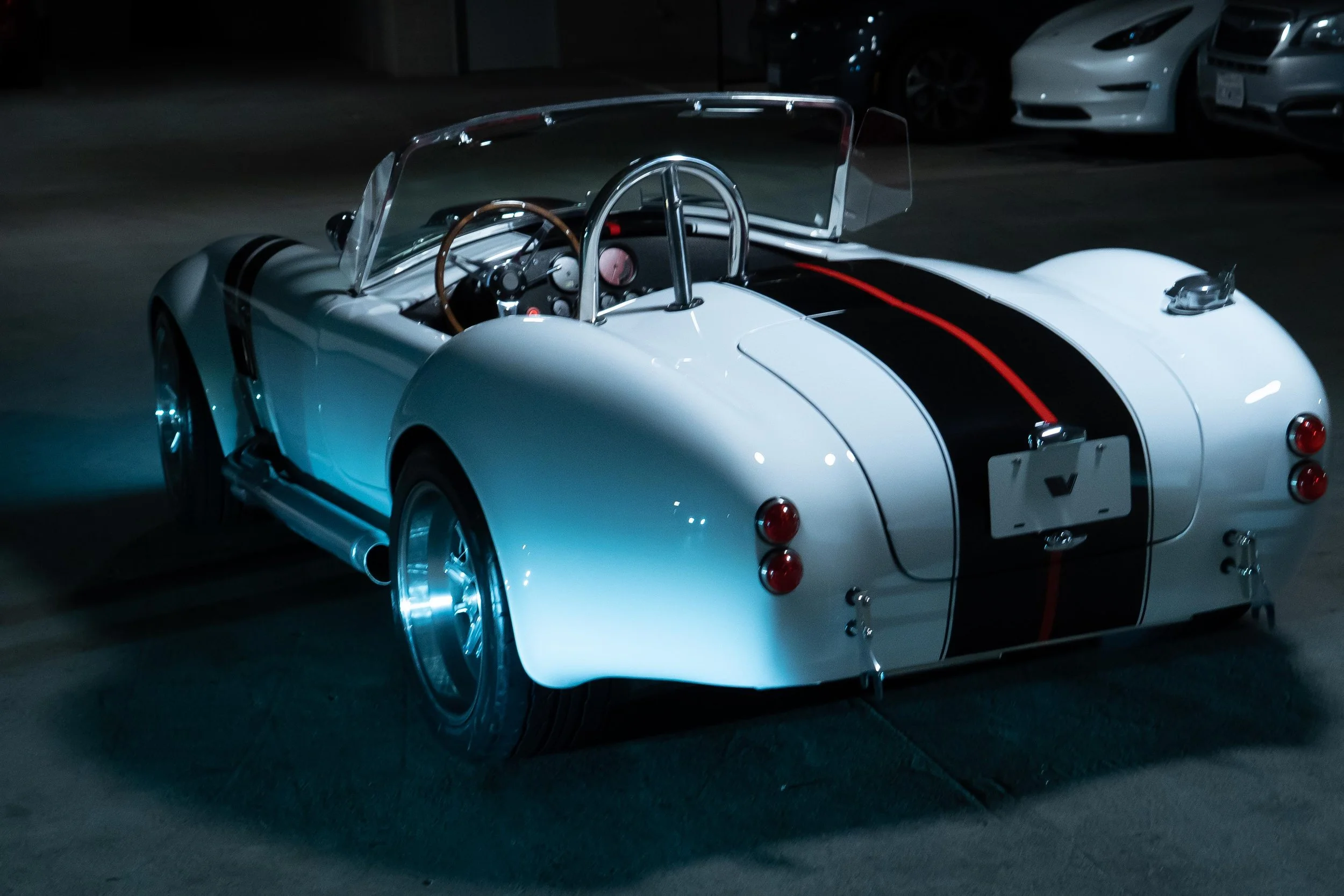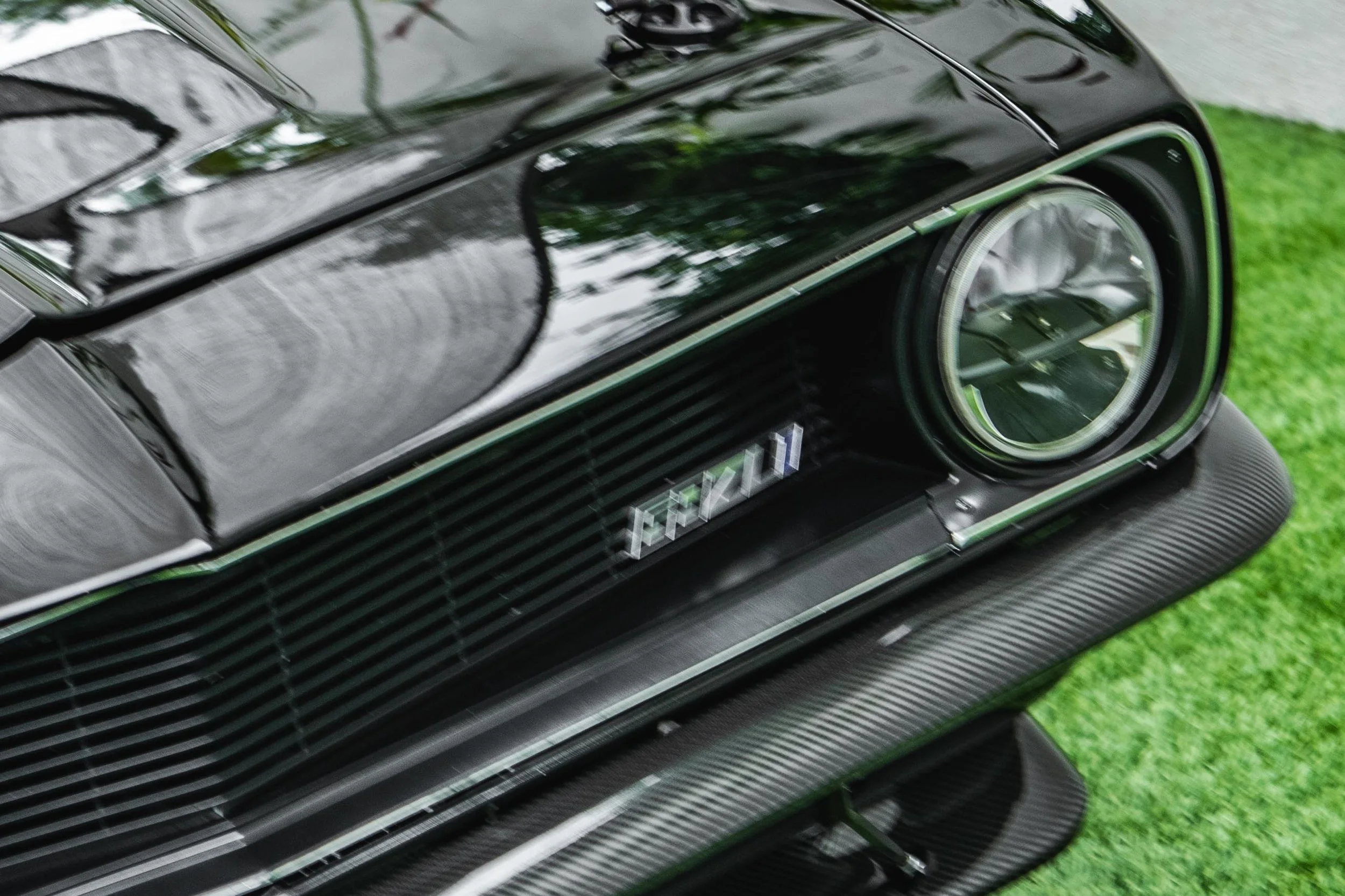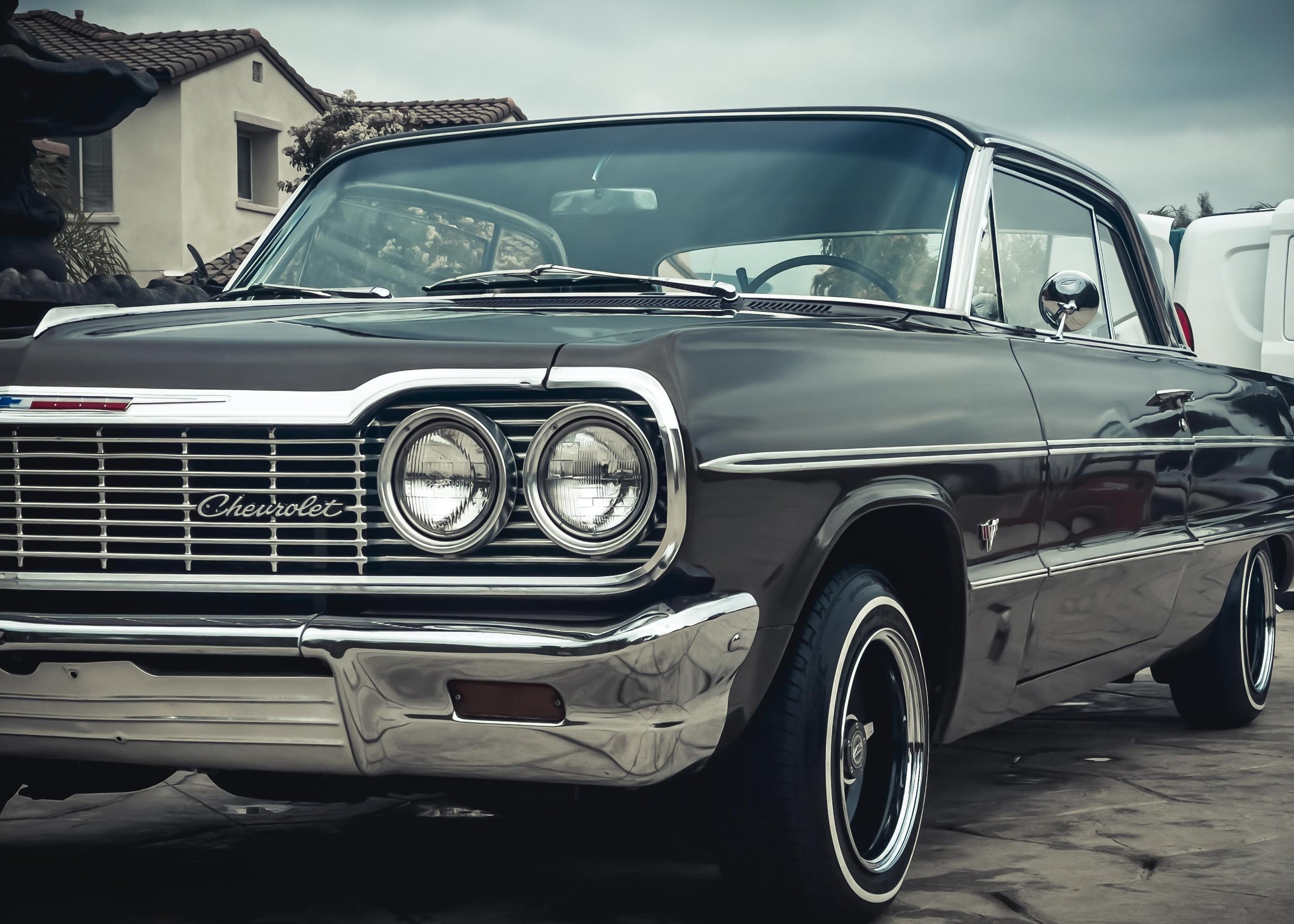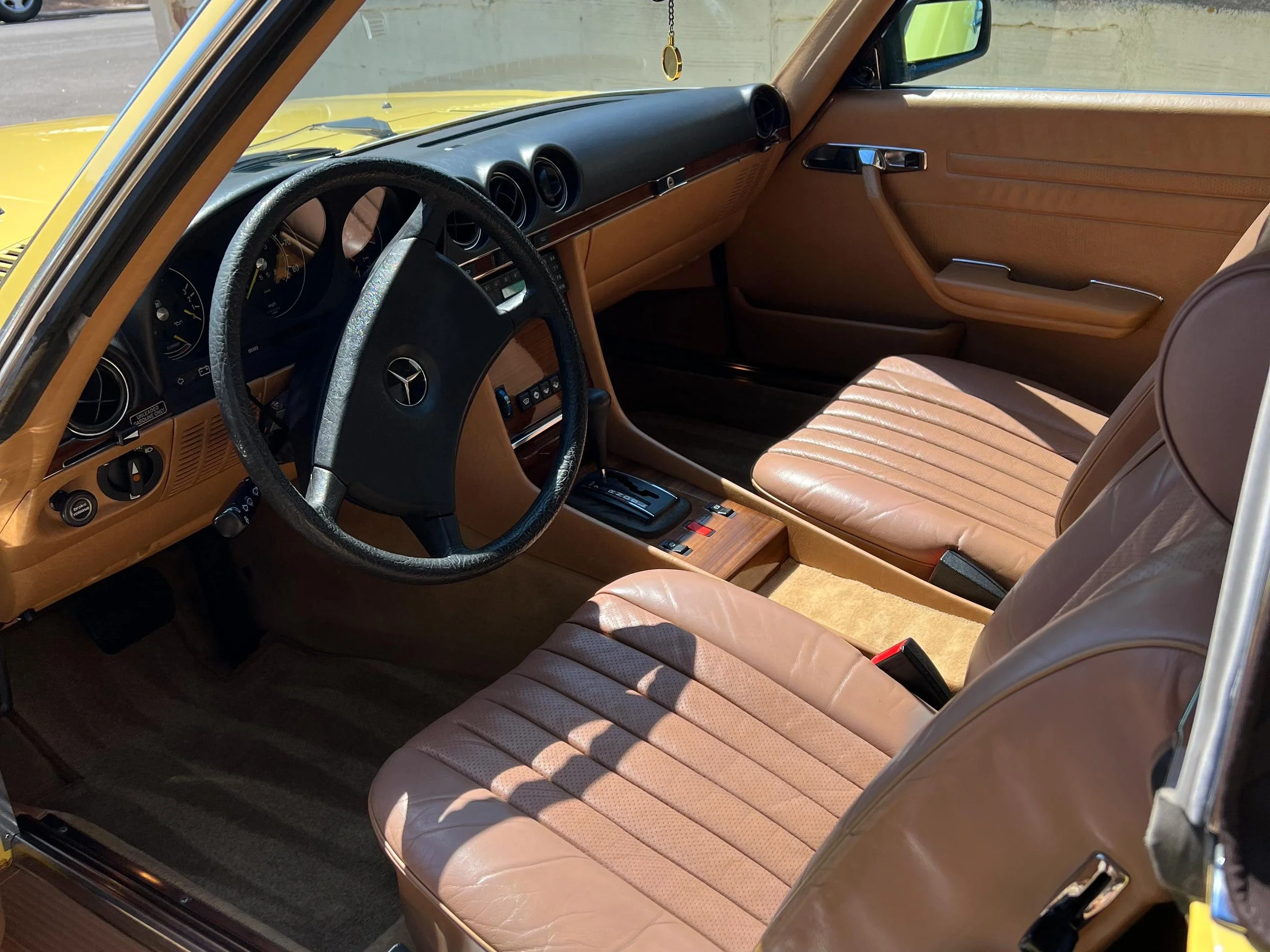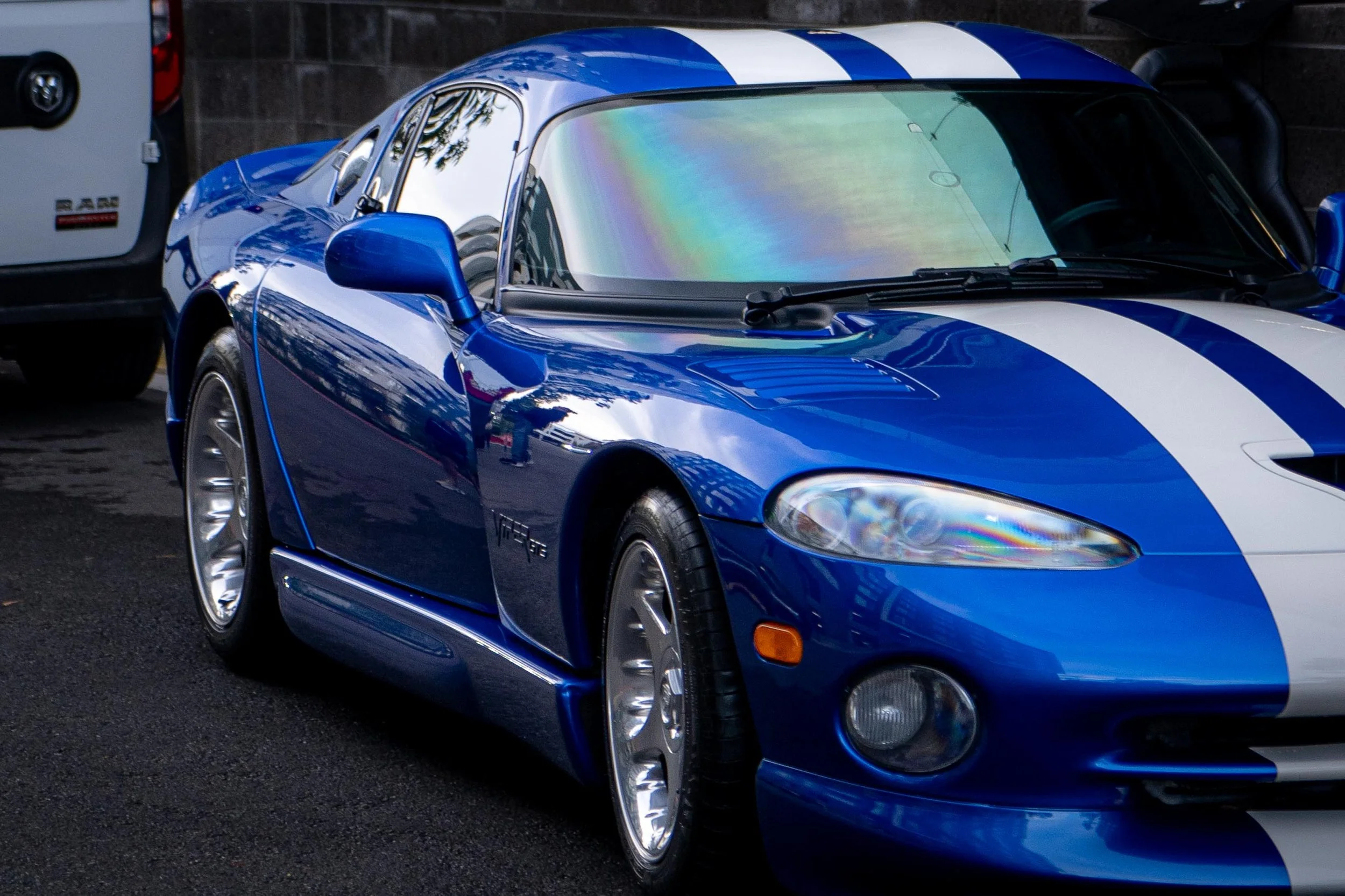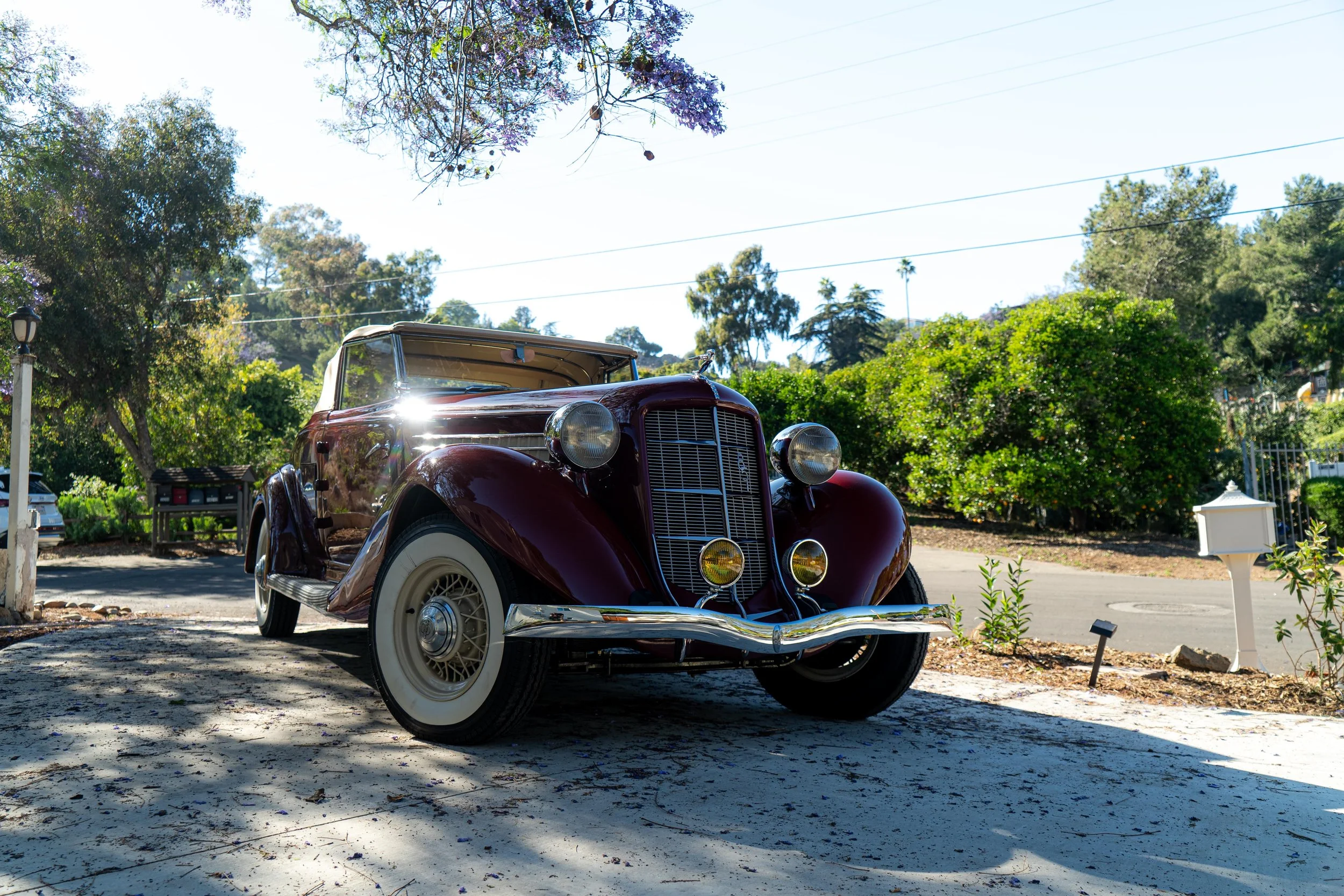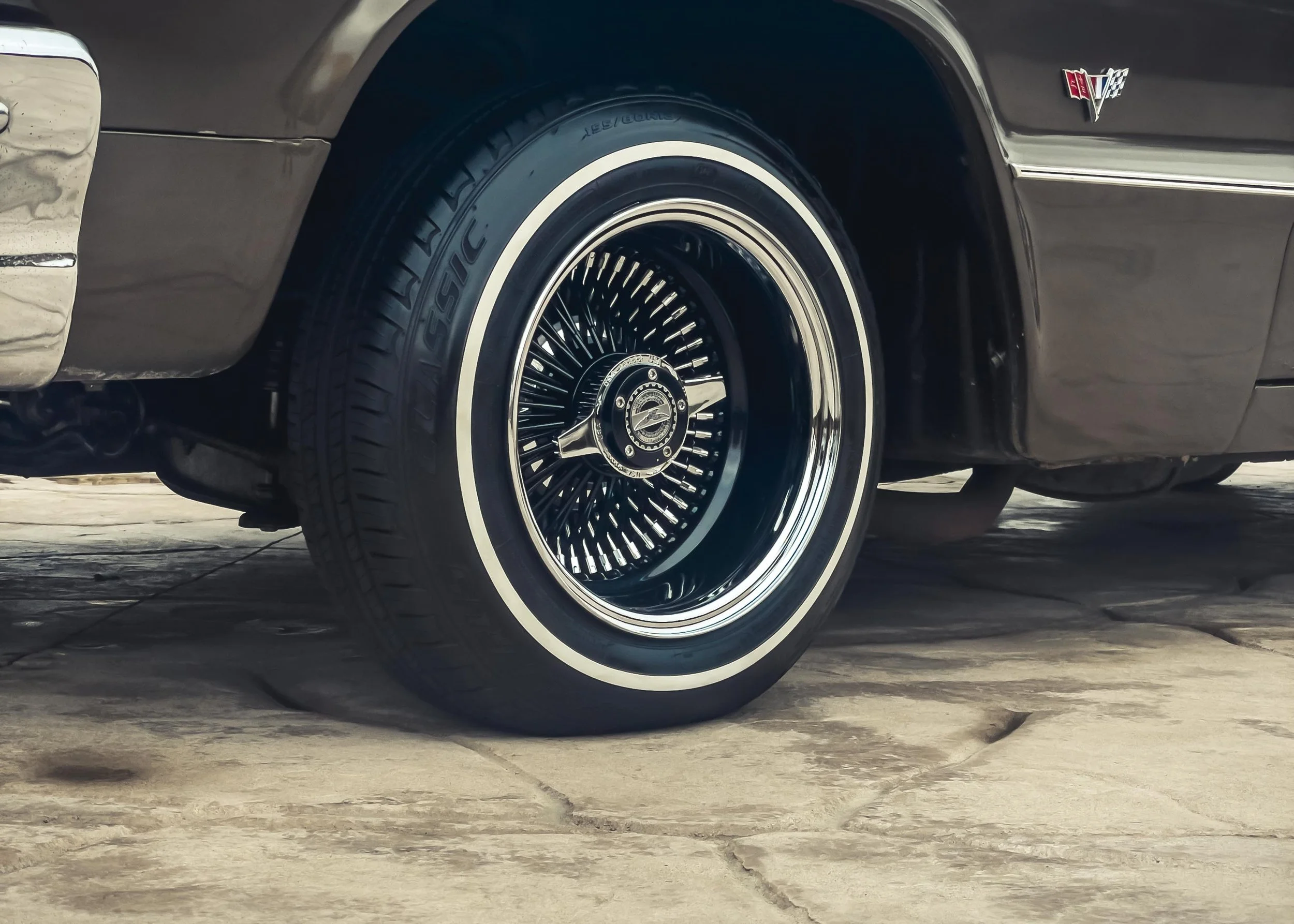Getting Your Ride Ready for the Pacific Beach Car Show
Look, I've been getting cars ready for the Pacific Beach Car Show since 2019, and I've learned some things the hard way. Like when that gorgeous '67 Mustang owner thought a weekend detail would cut it – he went home empty-handed while a guy with a way more beat-up Camaro took the trophy. Why? Because that Camaro owner understood what judges actually look for.
After prepping over 150 show cars and watching my customers take home 47 trophies (including 3 Best of Show wins), I'm going to share exactly what separates the winners from the "thanks for participating" crowd. This isn't theory – this is what actually works when rubber meets the road.
Here's what I'm going to teach you:
Why that "perfect" paint job might still lose you points (and how to fix it)
The Pacific Beach Car Show detailing secrets judges never tell you about
Real car show prep San Diego timelines that actually work (hint: it's not 3 days)
Show car detailing mistakes that'll cost you trophies before you even get there
Mobile detailing for classic cars – why I do it and why it wins
I'm Alex from Fresh Layer Mobile Detailing. I've been elbow-deep in show car prep since I started this business, and I've seen what works, what doesn't, and what absolutely kills your chances.
Reality Check: What Actually Wins at Pacific Beach
I hate to break it to you, but that car you think is "show ready" probably isn't. I've seen $100,000 restorations lose to $30,000 drivers because the expensive car had the wrong approach. The Pacific Beach Car Show isn't a parking lot cruise night – these judges know their stuff.
What Judges Actually Look For (From Someone Who's Watched Them Work)
Here's the breakdown that matters:
Paint and finish: 35% of your score (and where most people fail)
Interior: 25% (authenticity matters more than you think)
Engine bay: 20% (this is where I see the biggest screw-ups)
Undercarriage: 15% (yes, they look under there)
Overall presentation: 5% (the little details that show you care)
Real talk: I've watched judges ding a beautiful car 5 points because the owner used the wrong washer under the air cleaner. That's the difference between 1st and 3rd place right there.
The Competition Numbers That Should Scare You
Last year's show had 487 cars registered. Know how many class winners there were? 28. That's a 5.7% win rate. Your local Cars & Coffee this ain't.
I've been tracking what wins, and here's what I've learned:
Best paint scores: Always 95+ points (out of 100)
Class winners: Usually 88+ total points
Also-rans: Anything under 85 points
The margin between trophy and disappointment is razor-thin, and that's where professional prep makes or breaks you.
Pacific Beach Specific Challenges (That Nobody Talks About)
This show happens 3 blocks from the ocean. That means:
Salt air hitting your car during setup (I've seen cars get spotted during the show)
Sand blowing around (especially if it's windy)
Marine layer in the morning that can mess with your final prep
UV reflection off the water that shows every tiny defect
I prep for these conditions specifically. Most people don't even think about them.
Judge Psychology (What I've Learned Watching Them)
After watching hundreds of judging sessions, here's what I know:
They spend 2-3 minutes on paint, but 10+ minutes on details
First impressions matter huge – if they see problems immediately, they're looking for more
They talk to each other – if one judge finds an issue, the others go looking
Authenticity questions can kill you – they know more about your car than you do
Bottom line: You're not competing against other pretty cars. You're competing against other people who understand these rules and prep accordingly.
The Real Timeline: Why You Need More Time Than You Think
I get this call every year: "Hey Alex, show's in two weeks, can you get my car ready?"
My answer: "Sure, if you want to waste your entry fee."
Real car show prep San Diego doesn't happen in your garage over a weekend. Here's why, and what actually works:
Why 4 Weeks Minimum (From Someone Who's Tried to Rush It)
Week 1: Assessment and Reality Check
This is where I figure out what we're actually dealing with. That "great paint" might need correction. Those "perfect" chrome bumpers might have pitting you never noticed. The interior you thought was done might need components taken apart and detailed properly.
I spend this week documenting everything because I've learned the hard way that assumptions kill trophy chances.
Week 2-3: The Heavy Lifting
This is where the real work happens. Paint correction that's actually show-quality takes time. I'm talking multiple sessions, not one afternoon. Each stage needs to cure properly, and if you rush it, it shows.
I've had cars where the paint correction alone took 40 hours. You can't fake that kind of work.
Week 4: Details and Protection
This final week is all the little stuff that separates good from great. Engine bay detailing where every bolt gets attention. Interior work where I'm using Q-tips on vent slots. Undercarriage work that most people never think about.
What Happens When You Rush (Real Examples)
Case 1: Guy brings me a '69 Charger 10 days before the show. Beautiful car, recent restoration. I tell him we need more time. He insists. We do what we can. Car places 4th out of 8 in its class. Why? Paint wasn't properly corrected, engine bay details weren't finished.
Case 2: Lady with a '65 Mustang convertible gives me 6 weeks. We go through the full process. Best of Class winner, plus Best Interior award. Same amount of work, different timeline.
The difference? Time to do it right.
My Mobile Advantage (Why I Don't Use a Shop)
I work in your garage because:
No contamination from other cars being worked on
Climate control – your garage is better than most shops
Security – your $80K classic never leaves your property
No rush – I'm not juggling 6 other cars
Plus, you can watch and learn. I've had customers become judges themselves after seeing how this really works.
Weather Reality in San Diego
We've got it good here, but timing still matters:
Spring (March-May): Perfect for major work
Summer (June-August): Great for shows, terrible for paint work in direct sun
Fall (September-November): Ideal for prep work
Winter (December-February): Indoor work only, but perfect conditions
I schedule the heavy paint work for the right weather because it matters more than people think.
Paint That Actually Wins vs Paint That Looks Good
This is where I separate the serious competitors from the dreamers. Paint that wins show trophies is different from paint that looks good at Cars & Coffee. Way different.
What "Show Quality" Really Means (Not What You Think)
I've corrected paint on $200K restorations that looked amazing but would've lost points. Why? Because "looking good" and "judging perfect" are two different things.
Trophy-winning paint requirements:
Mirror reflection – you can read text in the reflection
Zero orange peel – smooth as glass, not factory texture
Perfect color match – every panel identical
No defects – and I mean NONE under bright lights
Most "show quality" paint jobs I see fail on orange peel. Factory paint has texture. Show paint doesn't.
Paint Correction: The Real Process (Not YouTube Version)
Stage 1: What Am I Actually Working With? I measure paint thickness on every panel. Why? Because I've seen "professionally painted" cars with 2 mils of clear coat. You can't correct what isn't there.
Paint thickness tells me:
How aggressive I can be
Whether wet sanding is possible
If the paint job is even correctable
What protection will actually stick
Stage 2: Decontamination (The Step Everyone Skips) Clay bar is amateur hour. I use iron removers, tar solvents, and specialized clay. Why? Because that "clean" paint has crap embedded in it that'll scratch your correction work.
I've pulled stuff out of paint that's been there for years. Metal particles, tree sap, road tar – it all has to go before correction starts.
Stage 3: Actual Correction (Where Skill Matters) This isn't about having the right compound. It's about:
Reading the paint – every manufacturer is different
Heat management – burning through clear coat kills cars
Technique – machine control that takes years to learn
Quality control – checking your work obsessively
I've seen DIY guys burn through paint in 30 seconds. That's a $3,000 mistake.
Stage 4: Protection (The Make-or-Break Moment) Show car protection isn't about longevity – it's about depth and clarity for one perfect day.
My protection stack:
Base coat: Usually a sealant for clarity
Enhancement coat: Carnauba for depth and warmth
Sacrificial layer: Product that takes the hit from handling
Why Mobile Paint Work Actually Works Better
Working in your garage beats any shop because:
No dust from other projects
Controlled temperature – your garage stays consistent
No time pressure – I'm not rushing to get the next car in
Better lighting – I bring professional LED panels
I've done paint correction in $2M restoration shops that couldn't match what I do in a clean garage.
Color-Specific Reality Checks
Black cars: Show every defect, require perfect technique, but look incredible when done right. I charge more for black because it takes 3x longer.
Red cars: Fade easy, show orange peel bad, but judges love a perfect red. The trick is UV protection during prep.
White cars: Hide defects well, but show contamination easy. Easier to correct, harder to keep perfect.
Metallics: The paint that separates pros from wannabes. Screw up the metallic pattern and it's obvious. I've seen $10K paint jobs ruined by poor correction technique.
Classic Cars: Why Mobile Detailing Just Makes Sense
Mobile detailing for classic cars isn't about convenience – it's about protecting investments. When I'm working on a numbers-matching '69 Z/28 worth $180K, that car doesn't leave the owner's property. Period.
Why Classic Cars Are Different (And Why It Matters)
Original paint preservation: You can't replace original 1967 paint. Once it's gone, it's gone. The car's value drops permanently.
I've worked on survivors with original paint that needed special handling:
Hand polishing only – no machine correction
Period-appropriate products – modern chemicals can damage old formulations
Minimal intervention – preserve patina and character
Document everything – judges need proof of authenticity
Single-stage paint reality: Cars before the mid-80s mostly have single-stage paint (no clear coat). This requires completely different techniques:
Different compounds – what works on clear coat kills single-stage
Heat sensitivity – single-stage burns easier
Color uniformity – harder to achieve consistent results
Protection challenges – no clear coat means more vulnerability
Authenticity: Where Values Live and Die
I've seen $50K cars become $20K cars because of wrong details. Judges know more about your car than you do, and they'll catch authenticity issues.
Things that kill authenticity scores:
Wrong bolt finishes (zinc vs cadmium plating)
Incorrect hose clamps (modern vs period-correct)
Wrong air cleaners (even if they "look right")
Reproduction parts without proper disclosure
Things that win authenticity points:
Original factory markings preserved
Correct assembly line details
Period-appropriate wear patterns
Complete documentation
My Mobile Classic Car Setup
When I work on classics, I bring:
Portable lighting – LED panels that show every detail
Climate monitoring – temperature and humidity matter for old paint
Specialized tools – hand tools that won't damage original components
Protection equipment – covers and barriers for components
Plus, working in your garage means:
No transport risk – classic cars hate being moved
Climate control – stable conditions during work
Security – your investment stays safe
Your oversight – you see everything being done
Classic Car Categories I Work With
Pre-war (1930s and earlier): Hand-applied finishes, lead-based paints, primitive primers. Requires museum-level care.
Post-war to 1970: The sweet spot for collectors. Most of my trophy winners come from this era.
Muscle car era (1960s-early 70s): High values, emotional connections, serious competition.
Modern classics (1980s-2000s): Clear coat cars, easier to work with, but still require expertise.
Each era needs different approaches, products, and techniques.
Value Protection Reality
Classic car values are insane right now. A '67 Camaro SS that was $15K in 2010 is $65K today. That means preparation mistakes are way more expensive than they used to be.
I document everything because:
Insurance claims – need proof of condition and work done
Resale value – professional records add value
Authentication – proves work was done correctly
Peace of mind – you know what was done and why
Interior Judging: Where Most People Screw Up
Interior judging is where I see the most points lost, and it's usually stuff that's completely avoidable. Judges spend serious time in the cabin, and they notice everything.
What Judges Actually Check (From Watching Them Work)
Cleanliness level: I'm talking Q-tip in every crevice clean. They check:
Vent slots and dash cracks
Door jamb details
Under seat areas
Pedal assemblies
Interior hardware
Authenticity details: They know what's supposed to be there:
Correct radio (or proper delete plate)
Right steering wheel for the year
Proper seat materials and patterns
Correct interior trim pieces
Condition assessment: They're looking for:
Wear patterns that make sense
Quality of restoration work
Appropriate aging vs damage
Consistency across all surfaces
Interior Prep: My Real Process
Complete disassembly: Yeah, I take stuff apart. Seats come out, door panels come off, everything gets individual attention.
Why? Because half-assed cleaning shows. You can't properly detail a dashboard with the seats in place.
Material-specific techniques:
Original leather: Different approach than modern leather
Vinyl: Product selection matters huge
Original fabric: Can't use modern carpet cleaners
Chrome trim: Hand polishing, no compounds that damage
Reassembly details: This is where craftsmanship shows:
Proper torque specs on fasteners
Correct alignment of trim pieces
All mechanisms working smoothly
No fingerprints or assembly marks
Common Interior Mistakes That Kill Scores
Using wrong products: Armor All on everything makes judges cringe. Different materials need different treatments.
Over-restoration: Making 50-year-old interior look brand new can hurt authenticity scores.
Missing details: Forgot to clean the ash tray? That's points lost.
Poor quality work: Crooked trim, loose panels, non-functioning mechanisms – all point deductions.
Interior Authenticity Traps
Radio issues: Wrong radio kills authenticity. Right radio with visible damage kills condition scores. Perfect balance.
Seat covers: Aftermarket seat covers scream "hiding something." If seats need help, restore them properly.
Floor mats: Wrong mats are worse than no mats. Period-correct or nothing.
Modifications: That custom stereo install from 1985? Either restore it to original or document the modification period.
Engine Bay Secrets: The Hidden Point-Scorers
Engine bay judging separates the serious competitors from everyone else. This is where I see 20-point swings based on details most people never think about.
What Most People Get Wrong
Cleanliness vs authenticity: A sterile engine bay that looks like a museum display can lose points for being over-restored. Judges want appropriate authenticity.
Wrong finishes: Using wrong paint colors, incorrect plating, modern fasteners – all point killers.
Missing components: Air cleaner spacer rings, correct radiator hoses, proper clamps – little stuff that matters huge.
Poor attention to detail: Dirty wiring, wrong routing, visible zip ties – amateur hour stuff.
My Engine Bay Process
Documentation first: I photograph everything before touching anything. Why? Because I need to put it back exactly right.
Complete degreasing: Not just visible surfaces – everything gets cleaned:
Behind accessories
Inside air cleaner housing
Under intake manifold
All wiring harnesses
Component restoration: Each piece gets individual attention:
Air cleaners: inside and out
Valve covers: proper finish and details
Accessories: correct finishes and mounting
Wiring: proper routing and protection
Authenticity verification: I check:
Part numbers and dates
Correct finishes (paint vs plating)
Proper assembly details
Period-appropriate modifications
Engine Bay Authenticity Secrets
Paint codes matter: Engine blocks, transmissions, rear ends all had specific colors. Wrong blue on a Chevy engine? Points lost.
Assembly line details: How wires were routed, where clamps were placed, what fasteners were used – judges know this stuff.
Date codes: Everything should make sense chronologically. A 1969 carburetor on a 1967 engine better have documentation explaining why.
Maintenance evidence: Some appropriate wear and maintenance marks actually help authenticity scores.
Undercarriage Reality
Yeah, they look under there. I've seen beautiful cars lose because the undercarriage wasn't prepped.
What I clean underneath:
Frame rails and crossmembers
Suspension components
Exhaust system
Brake lines and components
Fuel tank and lines
What judges look for:
Appropriate protection (undercoating vs bare metal)
Rust prevention and treatment
Cleanliness level
Component condition and authenticity
Final Week: Don't Blow It at the Finish Line
This is where I see people screw up cars I spent weeks perfecting. The final week isn't about major work – it's about not messing up what's already perfect.
Final Week Schedule (What Actually Works)
Days 7-5: Protection and final touches
Final protection application
Last-minute trim work
Interior final cleaning
Documentation preparation
Days 4-2: Transport prep
Vehicle inspection for transport
Protection for moving
Final fluid checks
Weather planning
Day 1: Final prep
Last cleaning session
Final inspection
Documentation organization
Show day supplies prep
Transport: Where Good Cars Get Ruined
I've seen perfect cars show up at shows with damage from transport. Here's how to not be that guy:
Open trailer reality: If you're using an open trailer, you're taking risks:
Road debris hitting the car
Weather exposure during transport
Dust and dirt contamination
UV exposure affecting protection
Enclosed transport: Worth every penny for show cars. I help coordinate enclosed transport for my customers because it matters.
Pre-transport protection:
Strategic covering of vulnerable areas
Wheel protection during loading
Interior protection from handling
Documentation of condition before loading
Show Day Protocol (From 150+ Shows)
Arrival timing: Get there early, but not too early. 2 hours before judging gives you time to set up without sitting in sun all day.
Final touch-up: Bring minimal supplies:
Quick detailer for dust removal
Microfiber towels (lots of them)
Glass cleaner for final clarity
Tire dressing for touch-ups
Judge interaction: Be ready to discuss:
Restoration decisions and authenticity
Work performed and by whom
Component sourcing and verification
Historical accuracy of modifications
Show Day Mistakes That Kill Trophy Chances
Over-handling: Too much last-minute touching and adjusting. Every fingerprint shows.
Wrong products: Using quick wax that attracts dust. Final products should repel contamination.
Poor positioning: Parking where judges can't see the car properly or where sun/shade creates issues.
Documentation problems: Can't find paperwork when judges ask questions about authenticity.
Why San Diego is Actually Perfect for Show Prep
After doing this in other states, I can tell you San Diego has advantages for car show prep San Diego that other regions just don't have.
Climate Advantages
Year-round work capability: I can do paint correction in December. Try that in Chicago.
Stable conditions: No humidity swings that mess up coating application. No temperature extremes that affect product performance.
Extended season: Show season here runs March through November. More opportunities to compete.
Optimal curing: Paint correction products and protective coatings cure better in our climate.
Local Resources
Parts availability: If I need something overnight, I can get it. West Coast distribution network is incredible.
Specialist network: More classic car specialists per capita than anywhere except maybe Los Angeles.
Quality suppliers: Access to professional-grade products and equipment that aren't available everywhere.
Transport infrastructure: Easy access to enclosed transport services for major shows.
Competition Level
Educated owners: San Diego car owners generally know more about proper care and preparation.
Higher standards: Competition level here pushes everyone to be better.
Knowledge sharing: Car community here is collaborative. People share what works.
Professional support: More detailing professionals with show experience.
Show Calendar Advantages
Multiple venues: Pacific Beach, Balboa Park, Del Mar, La Jolla – lots of opportunities to compete.
Year-round events: Something happening almost every month.
Major show proximity: Easy access to big regional and national events.
Practice opportunities: Regular Cars & Coffee events to test prep and get feedback.
Real Stories: How My Customers Actually Won
These aren't made-up testimonials. These are real cars, real owners, real trophy wins. Names changed for privacy, but everything else is exactly what happened.
Best of Show Winner: '63 Split Window Corvette
The owner: Retired engineer who spent 15 years restoring this car himself. Beautiful work, but he'd never shown before.
The challenge: First-time show prep, concours-level competition, car worth $250K.
What I did:
6-week prep timeline
Complete paint correction (40+ hours)
Engine bay detail down to individual bolts
Interior restoration including seat disassembly
Authentication documentation organization
The result: Best of Show out of 347 cars. Plus Best Paint award.
What made the difference: The owner did incredible restoration work. I just made sure every detail was perfect for judging. Paint correction alone took a week because we did it right.
Best Preservation: '69 Z/28 Camaro
The owner: Collector with numbers-matching, 68K-mile original car.
The challenge: Preserving originality while achieving show quality presentation.
What I did:
Hand polishing only (no machine correction)
Period-appropriate products exclusively
Minimal intervention philosophy
Extensive authentication documentation
The result: Best Preservation award, plus featured in national magazine.
What made the difference: Understanding that preservation and restoration are different animals. This car's value was in its originality, not perfection.
Class Winner: '70 'Cuda 440 Six Pack
The owner: Mechanic who did his own restoration but needed show prep.
The challenge: Mopar authenticity in serious competition field.
What I did:
Authentication verification of all components
Engine bay detailing focused on period correctness
Paint correction to eliminate restoration marks
Documentation of restoration process and parts sourcing
The result: Class winner plus Best Engine Bay award.
What made the difference: The owner knew Mopar details cold. I just made sure the presentation matched his knowledge.
People's Choice: '85 BMW M3
The owner: Young guy, first classic car, limited budget.
The challenge: Modern classic in competitive field, budget constraints.
What I did:
Priority-based prep (highest impact first)
Owner education and participation
Cost-effective product selection
Focus on what judges notice most
The result: People's Choice award plus class placing.
What made the difference: Smart resource allocation and the owner's enthusiasm. Sometimes passion beats perfection.
What These Wins Have in Common
Adequate timeline: None of these were rush jobs. All had 4+ week prep.
Owner involvement: Best results come when owners understand what we're doing and why.
Authenticity focus: Every winner had correct details for their specific car and era.
Professional execution: DIY restoration, professional presentation. That combination wins.
DIY vs Pro: The Honest Truth
I get asked this all the time: "Can I prep my own car for show?"
Honest answer: Depends on your goals, skills, and the car's value.
When DIY Makes Sense
Learning goals: If your main goal is learning, DIY is great. You'll screw some stuff up, but you'll learn.
Driver-level cars: Cars worth under $30K where mistakes aren't catastrophic.
Local shows: Regional events with more forgiving judging standards.
Time availability: If you have 6+ months and can work consistently.
Skill development: If you want to develop detailing skills for future projects.
When You Need Professional Help
High-value cars: Anything over $50K, don't risk it.
National competition: Concours-level events require professional prep.
Time constraints: Less than 3 months? You need help.
Trophy goals: If winning matters, get professional help.
Insurance protection: Some policies require professional documentation.
Reality Check: What DIY Actually Costs
Equipment investment: $3,000-5,000 for professional-level tools.
Learning curve: 2-3 cars before you get decent results.
Time investment: 300-500 hours for what I do in 120-150.
Mistake costs: Paint correction mistakes can cost $3,000+ to fix.
Opportunity cost: What's your time worth?
What I Tell People Honestly
Start small: Learn on a driver before touching your trophy car.
Get education: Books, videos, classes – invest in knowledge first.
Practice first: Perfect your technique before competition prep.
Know your limits: Some stuff (paint correction, authenticity verification) requires professional expertise.
Budget realistically: Professional prep costs less than most people think when you factor in time and potential mistakes.
The Middle Ground Approach
Owner prep with professional finish: You do the basic work, I handle the critical stuff.
Education-focused service: I work on your car while teaching you the process.
Consultation service: I assess your work and guide you through corrections.
Emergency backup: You prep, I'm available if problems arise.
Questions I Get Asked Every Single Time
-
A: For complete concours prep, figure $3,000-6,000 depending on the car's condition and your goals. Investment-grade cars needing museum quality can run $8,000-12,000.
But here's the thing – that sounds like a lot until you consider that a class win can add $10,000+ to your car's value, and a Best of Show can add $25,000+.
-
A: Better results, actually. Your garage has advantages most shops don't:
No contamination from other projects
Climate control that I can adjust for optimal conditions
No time pressure from other customers
Better security for your investment
Plus, working in your space means you can watch and learn the process.
-
A: For Pacific Beach Car Show, I book up 3-4 months ahead. For smaller shows, 6-8 weeks is usually enough. The cars that win are the ones that get proper timeline allocation.
-
A: Depends on your goals. If you want to learn and have fun, absolutely. If you want to win trophies, it depends on the competition level and what "driver-quality" actually means.
-
A: Night and day. Regular detail shops focus on making cars look clean and shiny. Show prep is about achieving perfection that survives close inspection under bright lights by people who know what to look for.
-
A: I can guarantee professional-level preparation that gives you the best possible chance. But judging has subjective elements, and competition varies. What I can promise is that preparation won't be what costs you points.
-
A: Very carefully. No automatic car washes, pH-neutral products only, microfiber everything, covered storage when possible. I provide detailed maintenance instructions for every car I prep.
-
A: Available for customers who need it. Final touch-ups, judge interaction support, emergency problem solving. Some shows I'm there anyway working on multiple cars.
Bottom Line: What Actually Wins Show Trophies
After 150+ show cars and 47 trophy wins, here's what I know for sure:
Preparation time matters more than anything else. You cannot fake the level of detail that wins major shows. It takes what it takes.
Professional execution separates winners from participants. Good DIY work looks good from 10 feet. Trophy-winning work looks perfect from 10 inches.
Authenticity knowledge wins more points than perfect paint. Judges can tell when you know your stuff vs when you're guessing.
The little details kill you or save you. Wrong washer under the air cleaner costs more points than you'd believe.
Mobile service protects your investment while delivering superior results. Your garage is better than most shops, and your car never has to leave.
Ready to Actually Win?
If you want to compete seriously at Pacific Beach Car Show or any major event, let's talk. I'll be straight with you about your car's potential, realistic timelines, and what it takes to get there.
I don't take on every car that calls. I work with people who understand that winning requires professional preparation and are willing to invest the time and money to do it right.
I'm Alex from Fresh Layer Mobile Detailing. I've been turning good cars into trophy winners since 2019, and I know exactly what it takes to win at Pacific Beach Car Show. Let's get your car ready to compete.


